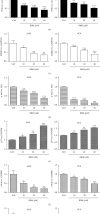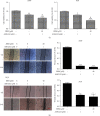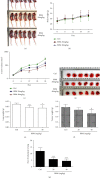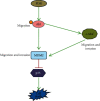Berbamine Inhibits Cell Proliferation and Migration and Induces Cell Death of Lung Cancer Cells via Regulating c-Maf, PI3K/Akt, and MDM2-P53 Pathways
- PMID: 34306137
- PMCID: PMC8285168
- DOI: 10.1155/2021/5517143
Berbamine Inhibits Cell Proliferation and Migration and Induces Cell Death of Lung Cancer Cells via Regulating c-Maf, PI3K/Akt, and MDM2-P53 Pathways
Abstract
Berbamine (BBM) is a natural product isolated from Berberis amurensis Rupr. We investigated the influence of BBM on the cell viability, proliferation, and migration of lung cancer cells and explored the possible mechanisms. The cell viability and proliferation of lung cancer cells were evaluated by MTT assay, EdU assay, and colony formation assay. Migration and invasion abilities of cancer cells were determined through wound scratch assay and Transwell assay. Cell death was evaluated by cell death staining assay and ELISA. The expressions of proteins were evaluated using western blot assay. A xenograft mouse model derived from non-small-cell lung cancer cells was used to detect the effect of BBM on tumor growth and metastasis in vivo. Both colony formation and EdU assays results revealed that BBM (10 μM) significantly inhibited the proliferation of A549 cells (P < 0.001). BBM (10 μM) also significantly inhibited the migration and invasion ability of cancer cells in wound scratch and Transwell assays. Trypan blue assay and ELISA revealed that BBM (20 μM) significantly induced cell death of A549 cells. In xenograft mouse models, the tumor volume was significantly smaller in mice treated with BBM (20 mg/kg). The western blotting assay showed that BBM inhibited the PI3K/Akt and MDM2-p53 signaling pathways, and BBM downregulated the expression of c-Maf. Our results show that BBM inhibits proliferation and metastasis and induces cell death of lung cancer cells in vitro and in vivo. These effects may be achieved by BBM reducing the expression of c-Maf and regulating the PI3K/Akt and MDM2-p53 pathways.
Copyright © 2021 Lili Liu et al.
Conflict of interest statement
The authors declare that they have no conflicts of interest.
Figures










References
LinkOut - more resources
Full Text Sources
Research Materials
Miscellaneous

